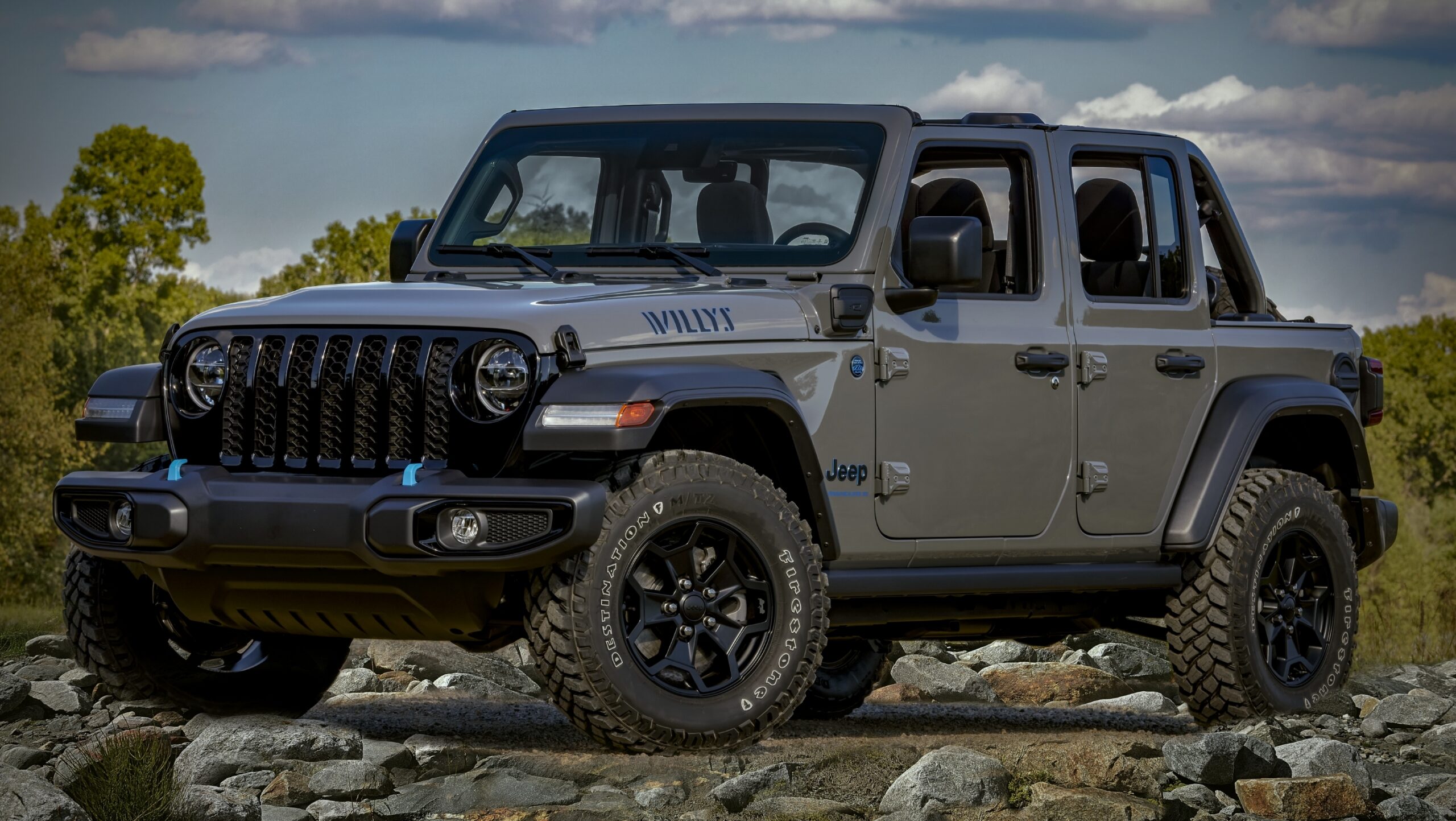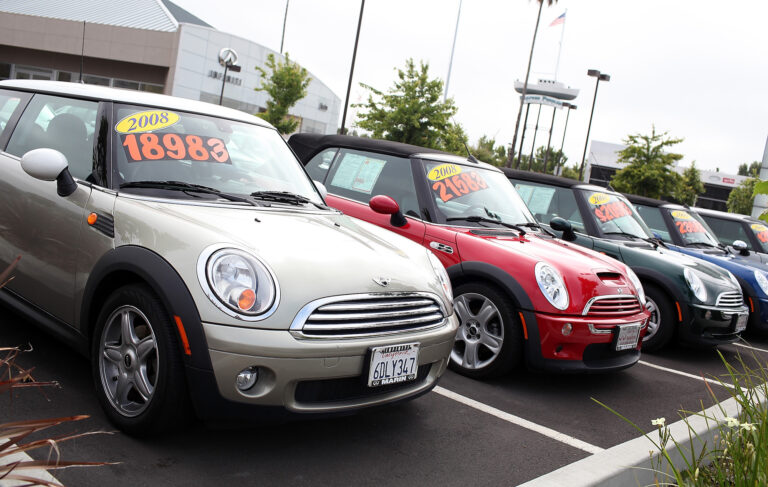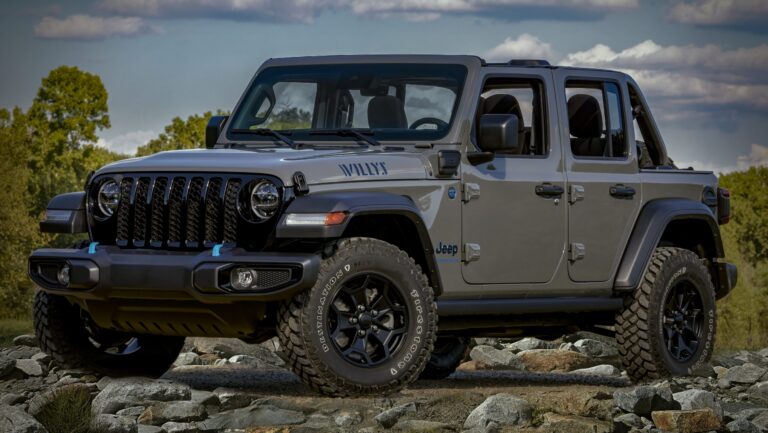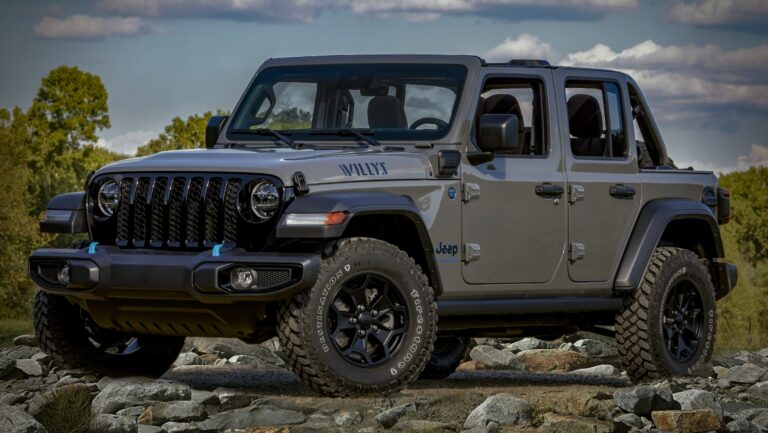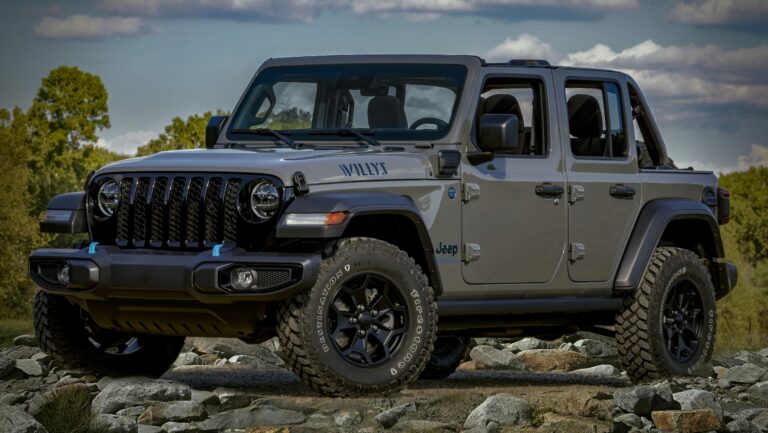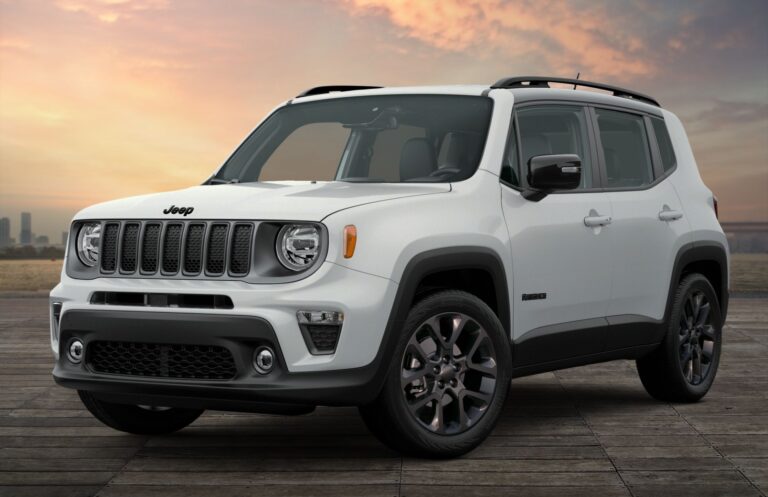Jeep XJ Rims For Sale: A Comprehensive Buyer’s Guide
Jeep XJ Rims For Sale: A Comprehensive Buyer’s Guide jeeps.truckstrend.com
The Jeep Cherokee XJ, a legendary SUV revered for its rugged simplicity, off-road prowess, and timeless design, holds a special place in the hearts of automotive enthusiasts. Whether you’re a seasoned off-roader, a daily commuter, or a weekend adventurer, the condition and type of rims on your XJ play a crucial role in its performance, safety, and aesthetic appeal. When you’re searching for "Jeep XJ Rims For Sale," you’re not just looking for a piece of metal; you’re seeking an upgrade that can transform your vehicle’s capabilities and presence.
This comprehensive guide is designed to be your ultimate resource, delving into everything you need to know about purchasing rims for your Jeep Cherokee XJ. From understanding vital specifications and exploring different types to finding the best deals and ensuring proper installation, we’ll cover all bases to help you make an informed decision.
Jeep XJ Rims For Sale: A Comprehensive Buyer’s Guide
Understanding Jeep XJ Rims: Specifications and Compatibility
Before you even start browsing, it’s paramount to understand the fundamental specifications that dictate rim compatibility with your Jeep XJ. Getting these wrong can lead to costly mistakes, rubbing issues, or even unsafe driving conditions.
The Critical Bolt Pattern: 5×4.5 (5×114.3mm)
This is the most crucial specification. All Jeep Cherokee XJs (1984-2001) utilize a 5×4.5-inch (or 5×114.3mm) bolt pattern. This means there are five lug holes, and the circle on which they are centered measures 4.5 inches (or 114.3 millimeters) in diameter. Any rim you consider must match this pattern precisely; otherwise, it simply won’t fit.
Center Bore: 71.5mm
The center bore is the hole in the middle of the rim that fits over the hub of your vehicle. For the Jeep XJ, this measurement is typically 71.5mm. While rims with a larger center bore can be used with hub-centric rings to ensure a snug fit and prevent vibrations, a rim with a smaller center bore will not fit at all.
Offset and Backspacing: The Stance and Clearance Game

These two measurements are often confused but are vital for proper fitment, especially when accommodating larger tires or achieving a desired stance.
- Offset: The distance from the mounting surface of the wheel to the true centerline of the wheel.
- Positive Offset: The mounting surface is towards the front (outboard) of the wheel’s centerline. This tucks the wheels further inward under the fender.
- Negative Offset: The mounting surface is towards the rear (inboard) of the wheel’s centerline. This pushes the wheels further outward from the fender, creating a wider stance.
- Zero Offset: The mounting surface is exactly at the wheel’s centerline.

- Backspacing: The distance from the mounting surface to the back edge of the rim. This is often easier to measure and understand for off-roaders.
- Lower Backspacing (e.g., 3.75" – 4"): Pushes the wheel further out from the vehicle, providing more clearance for wider tires against suspension components but potentially causing rubbing on fenders during turns or articulation.
- Higher Backspacing (e.g., 4.5" – 5.25"): Pulls the wheel further in, reducing fender rubbing but potentially causing interference with steering components or control arms, especially with wider tires.

For most XJ owners looking to run larger tires (e.g., 31-33 inches) with a modest lift, a backspacing of 3.75 to 4.5 inches is generally recommended to balance tire clearance with minimal rubbing.
Diameter and Width
- Diameter: Common diameters for XJ rims range from 15 inches (stock) up to 17 or even 18 inches. While larger diameters allow for bigger brakes, they reduce the tire’s sidewall height, which can impact ride comfort and off-road flex. 15-inch rims are popular for off-roading due to the larger tire sidewall providing better cushioning and flexibility.
- Width: Rims typically range from 7 to 10 inches wide. The rim width must be compatible with the width of the tire you plan to mount. For example, a 12.5-inch wide tire generally requires a rim that is 8-10 inches wide.
Why Upgrade or Replace Your XJ Rims?
The decision to buy new or used rims for your Jeep XJ often stems from a variety of motivations, ranging from practical necessity to aesthetic desire.
- Aesthetics and Personalization: One of the most common reasons. Stock XJ rims, while functional, might not match your style. New rims can drastically change the look of your vehicle, making it more aggressive, classic, or unique.
- Accommodating Larger Tires: If you’re upgrading to larger diameter or wider tires for off-road performance or a more aggressive stance, your stock rims likely won’t provide adequate backspacing or width to prevent rubbing against suspension components or fenders.
- Performance Enhancement: Lighter alloy rims can reduce unsprung weight, potentially improving handling, acceleration, and fuel efficiency (albeit marginally for an XJ). Some performance-oriented rims also offer better heat dissipation for brakes.
- Off-Road Durability and Functionality: For serious off-roading, stronger steel or specialized beadlock rims offer enhanced durability and the ability to run very low tire pressures without bead separation.
- Repair or Replacement: Damaged, bent, or severely rusted rims compromise safety and performance. Replacing them is a necessity.
- Tire Rotation Issues: Sometimes, specific tire and rim combinations can cause uneven wear if not rotated properly, leading to a need for new rims that allow for better rotation options.
Types of Rims Available for Jeep XJ
The market for XJ rims offers a wide array of choices based on material, construction, and style.
By Material:
- Steel Rims:
- Pros: Very strong, durable, inexpensive, can often be hammered back into shape after impacts, good for heavy off-road abuse.
- Cons: Heavy (adds unsprung weight), prone to rust, limited aesthetic options. Common designs include "D-window" and "Soft 8" styles.
- Alloy (Aluminum) Rims:
- Pros: Lighter than steel (improves handling, braking, fuel economy slightly), better heat dissipation for brakes, wide variety of designs and finishes, resistant to rust (though can corrode).
- Cons: More expensive, can crack or bend more easily than steel under severe impact (and are harder to repair), prone to curb rash.
By Construction/Function:
- Standard (Non-Beadlock) Rims: The most common type, where the tire bead seats directly against the rim’s inner lip. Suitable for most street and moderate off-road use.
- Simulated Beadlock Rims: Designed to look like beadlocks with decorative bolts, but function as standard rims. Offer the aggressive look without the cost or maintenance of true beadlocks.
- True Beadlock Rims: Feature an outer ring that clamps the tire bead against the rim, preventing the tire from coming off at very low air pressures (essential for extreme rock crawling).
- Pros: Ultimate off-road performance, allows extremely low PSI.
- Cons: Expensive, heavy, require significant maintenance, often not DOT-approved for street use (check local laws), can be tricky to balance.
By Style and Finish:
XJ rims come in countless styles, from classic five-spoke designs to modern multi-spoke patterns. Finishes include matte black, gloss black, machined, polished, chrome, and custom powder coats. Your choice here largely depends on personal preference and the overall look you want for your XJ.
Where to Find Jeep XJ Rims For Sale
The hunt for the perfect set of rims can lead you to various online and local sources, each with its own advantages.
New Rims:
- Online Retailers:
- Dedicated Off-Road & Jeep Parts Stores: Quadratec, ExtremeTerrain, Morris 4×4 Center, 4 Wheel Parts, Northridge4x4. These offer a wide selection specifically for Jeeps, often with fitment guarantees and expert advice.
- General Automotive Retailers: Summit Racing, Jegs, Tire Rack, Discount Tire. Excellent for competitive pricing and a broad range of brands.
- E-commerce Giants: Amazon, eBay. Can offer good deals, especially on lesser-known brands, but always verify seller reputation and return policies.
- Local Automotive Shops:
- Tire Shops: Many local tire stores stock popular rim brands and can assist with installation and balancing.
- Off-Road Specialty Shops: These shops often have experienced staff who can provide tailored recommendations for your XJ and even show you physical examples.
- Manufacturer Websites: Direct from brands like Method Race Wheels, Black Rhino, Pro Comp, Cragar, etc.
Used Rims:
- Online Marketplaces:
- Facebook Marketplace: Excellent for local deals. Search for "Jeep XJ rims," "5×4.5 wheels," or "Cherokee wheels."
- Craigslist: Similar to Facebook Marketplace, good for local pick-up.
- Dedicated Jeep Forums & Facebook Groups: Many XJ-specific groups have "for sale" sections where members sell used parts. This can be a great way to find well-maintained items from enthusiasts.
- Salvage Yards/Junkyards: You might get lucky and find a set of stock XJ rims or even aftermarket ones on a salvaged vehicle. Prices are usually very low, but condition varies greatly.
- Swap Meets & Off-Road Events: These gatherings often have vendors or individuals selling used parts. You can inspect the rims in person and negotiate prices.
Key Considerations When Buying Rims
Making an informed purchase requires more than just finding a good price. Consider these factors carefully:
- Budget: New rims can range from $70 for basic steel to $400+ per wheel for premium alloys or beadlocks. Used rims are significantly cheaper but require careful inspection.
- Intended Use:
- Daily Driver/Street: Prioritize aesthetics, weight, and durability against curb rash.
- Light Off-Roading: Focus on moderate strength and good tire clearance.
- Heavy Off-Roading/Rock Crawling: Durability (steel or true beadlocks), specific backspacing, and ability to withstand abuse are paramount.
- Tire Size: Your new rims must be compatible with your current or planned tire size. Always check manufacturer recommendations for tire width compatibility with rim width.
- Suspension Lift: If you plan on running larger tires (e.g., 31" or above), a suspension lift is almost always necessary to prevent rubbing, especially when combined with a specific backspacing.
- Backspacing/Offset: Revisit this critical spec. It’s the primary factor in avoiding tire-to-fender or tire-to-suspension rubbing. Measure your current setup or research what works best for your desired tire size and lift.
- Condition (for Used Rims):
- Inspect for Bends/Cracks: Use a straightedge or spin the rim on a balancer if possible. Small bends can cause vibrations. Cracks are a definite no-go.
- Check for Rust/Corrosion: Especially with steel rims. Surface rust can be cleaned, but deep rust indicates structural weakness.
- Curb Rash/Scratches: Aesthetic issues that may or may not bother you.
- Lug Nut Seat Damage: Ensure the tapered or spherical seats for the lug nuts are not damaged, as this can affect proper torque and security.
- Lug Nuts: Rims often don’t come with lug nuts. Ensure you purchase the correct type (tapered/conical, spherical/ball, or shank) and thread pitch (1/2"-20 for XJ) for your new rims and existing studs.
- TPMS (Tire Pressure Monitoring System): Most older XJs (pre-2007) do not have TPMS. If yours does (unlikely for an XJ, but worth noting for later models), ensure the new rims can accommodate the sensors.
- Shipping Costs: Rims are heavy and bulky. Factor in shipping costs, especially when buying online, as they can significantly impact the total price.
Installation Tips and Best Practices
Once you’ve acquired your new rims, proper installation is crucial for safety and performance.
- Safety First: Always work on a level surface. Use sturdy jack stands to support your XJ, never rely solely on a jack. Chock the wheels that remain on the ground.
- Clean Mounting Surfaces: Before installing, ensure the hub and the back of the new rim are clean and free of rust, dirt, or debris. This ensures proper seating and prevents vibrations.
- Test Fitment: Before fully torquing down, mount the wheel and turn the steering wheel lock-to-lock, and cycle the suspension if possible, to check for any rubbing issues, especially with larger tires.
- Proper Lug Nut Torquing: Use a torque wrench to tighten lug nuts to the manufacturer’s specified torque (typically around 90-110 ft-lbs for XJ). Tighten in a star pattern to ensure even pressure.
- Professional Balancing: Always have new tires and rims professionally balanced. Unbalanced wheels cause vibrations, premature tire wear, and can damage suspension components.
- Re-torque After Driving: After driving 50-100 miles, re-torque your lug nuts. Wheels can sometimes settle, and initial torque might loosen slightly.
Common Challenges and Solutions
Even with careful planning, you might encounter some challenges when upgrading your XJ’s rims.
- Tire Rubbing:
- Problem: Tires rub against fenders, control arms, or sway bars during turns or suspension articulation.
- Solution: Adjust backspacing/offset (if possible), trim fenders (fender flares can help), install a suspension lift, or consider narrower tires.
- Vibrations:
- Problem: Shaking in the steering wheel or throughout the vehicle.
- Solution: Ensure wheels are properly balanced, check for bent rims, verify lug nuts are torqued correctly, and ensure hub-centric rings are used if needed for rims with a larger center bore.
- Finding Specific Styles/Finishes:
- Problem: The exact rim you want might be out of stock or hard to find.
- Solution: Be patient, expand your search to more retailers, consider slightly different but similar designs, or look into custom powder coating services for a specific finish.
- Damaged Used Rims:
- Problem: A "deal" on used rims turns out to be a set of bent or cracked wheels.
- Solution: Thorough inspection before purchase is key. Ask for detailed photos and videos, and if possible, inspect in person. If buying online, ensure the seller offers returns for misrepresented items.
Representative Price Table for Jeep XJ Rims (Estimates)
Prices for Jeep XJ rims vary significantly based on material, brand, design, and whether they are new or used. This table provides a general estimate for a single rim (excluding tires, shipping, and installation).
| Rim Type Category | Typical Price Range (Per Rim) | Key Characteristics & Notes |
|---|---|---|
| Used Steel (Stock/Basic) | $20 – $70 | Often found on marketplace, junkyards. May have rust/wear. |
| New Steel (D-Window/Soft 8) | $70 – $120 | Durable, heavy, budget-friendly. Common for off-road. |
| Used Alloy (Aftermarket) | $50 – $150 | Wide range of conditions and styles. Good value if in good shape. |
| New Alloy (Budget/Entry) | $100 – $180 | Lighter than steel, variety of designs. Brands like Pro Comp, Vision. |
| New Alloy (Mid-Range) | $180 – $280 | Better quality, more intricate designs. Brands like KMC, Fuel, XD. |
| New Alloy (Premium/Forged) | $280 – $450+ | High-performance, lightweight, superior strength. Brands like Method Race Wheels, TRD. |
| New True Beadlock | $300 – $600+ | Specialized for extreme off-roading. Heavy, expensive, maintenance-intensive. Often not street legal. |
Note: These are estimates for a single rim. A full set of four will cost four times these amounts. Prices can fluctuate based on sales, promotions, and market demand.
Frequently Asked Questions (FAQ) about Jeep XJ Rims
Q1: What is the exact bolt pattern for a Jeep XJ?
A1: The Jeep XJ uses a 5×4.5 inch (or 5×114.3mm) bolt pattern. This is critical for compatibility.
Q2: What is the best backspacing for a Jeep XJ?
A2: For most XJs with a lift and larger tires (e.g., 31-33 inches), a backspacing of 3.75 to 4.5 inches is generally recommended to provide adequate clearance and a good stance. Less backspacing pushes the wheel out, more pulls it in.
Q3: Can I put 17-inch rims on my Jeep XJ?
A3: Yes, you can. Many XJ owners upgrade to 16-inch or 17-inch rims. Just ensure the bolt pattern, center bore, and desired backspacing are correct. Remember that larger rim diameters mean less tire sidewall, which can affect ride comfort and off-road flex.
Q4: Do I need new lug nuts when I buy new rims?
A4: Most likely, yes. Rims often do not come with lug nuts. More importantly, different rims require different types of lug nut seats (e.g., conical/tapered, spherical/ball, or shank). Ensure you get lug nuts that match both your XJ’s 1/2"-20 thread pitch and the seat type of your new rims.
Q5: How do I know if a used rim is good before buying it?
A5: Inspect it thoroughly for bends (use a straightedge or roll it), cracks (especially around lug holes or spokes), deep rust, and significant damage. If possible, have it mounted on a tire balancer to check for true-ness. Ask the seller for detailed photos and be wary of "too good to be true" deals.
Q6: Will new rims affect my speedometer?
A6: The rims themselves do not directly affect your speedometer. However, if you install tires that are a different diameter than your stock tires, your speedometer and odometer readings will be inaccurate.
Q7: Do I need a suspension lift for new rims?
A7: Not necessarily for the rims alone, but you almost certainly will if you plan to install larger tires in conjunction with new rims. The combination of tire size and rim backspacing determines if a lift (and potentially fender trimming) is needed to prevent rubbing.
Conclusion
The journey of finding "Jeep XJ Rims For Sale" is an exciting step in customizing and enhancing your beloved Cherokee. By understanding the critical specifications like the 5×4.5 bolt pattern, center bore, and the nuances of offset and backspacing, you can confidently navigate the vast market. Whether you prioritize rugged steel for hardcore trails or lightweight alloys for street appeal, the right set of rims will not only elevate your XJ’s aesthetics but also optimize its performance for your specific needs.
Remember to conduct thorough research, inspect used items meticulously, and prioritize safety during installation. With careful consideration and this comprehensive guide, you’ll soon be rolling on a set of rims that perfectly complement your legendary Jeep XJ, ready for whatever adventures lie ahead.

